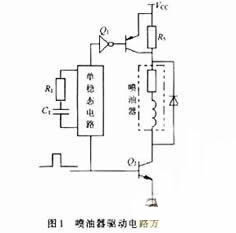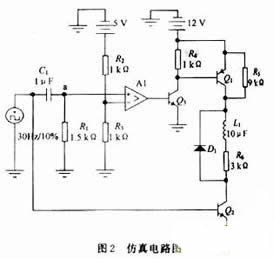In the initial stage of electronic circuit design, in order to verify the function of the circuit, the electronic engineer often welds a test board or laps the circuit on the breadboard, and then analyzes and judges through the test instrument. This method is time consuming and labor intensive, and is also subject to hardware equipment, and measurement accuracy is poor. With the rapid development of computer technology, computer-aided analysis and simulation technology has been widely used. Based on the successful launch of EWB (Electronics Workbench) and Multisim2001, Interactive Image Technologies of Canada released Multisim7.0 simulation software in May 2003, which provides a fast and efficient means for comprehensive verification and optimization of circuit functions.
This article refers to the address: http://
First, the features of Multisim 7.0
Multisim7.0 is a virtual lab that creates an integrated and integrated test environment for users. It uses a graphical input method to complete circuit construction and analysis with simple drag and drop and connection operations. As a professional application, he has the following characteristics:
(1) Rich components and test instruments
Multisim7.0 provides thousands of circuit components, including basic independent components (resistors, capacitors, transistors, etc.), integrated circuits (74 and 40 series chips, DA and AD, integrated op amps, etc.), source devices (various independent sources) , controlled source, clock signal, etc.), basic display devices (voltmeters, ammeters, digital tubes, etc.) and other components (Relays, electromagnets, DC motors, etc.), and can also be expanded or newly built as needed The device library greatly facilitates the user. The parameters of each component in the software are adjustable and provide ideal values, which provides a basis for analyzing the difference between the actual value and the theoretical value of the circuit. Multisim7.0 test instruments include digital multimeters, function generators, multi-synchronous oscilloscopes, frequency sweepers, frequency meters, logic analyzers, etc. It is difficult to envisage the huge investment required to actually purchase these instruments.
(2) Dynamic visualization effect
The components of Multisim7.0 are in the same shape as the real object, so users can easily find the required components even when they are used for the first time. For the test instrument, the display of the measurement results is also consistent with the actual equipment, and the operation of the system can be detected in real time. In addition, his digital tube can emit light, the fuse can be blown, the buzzer can sound, the resistor can change the resistance value through the keyboard at any time, visually characterizes the dynamic characteristics of the circuit, and embodies the essence of its "software is instrument". characteristic.
(3) Multiple analysis functions
As a virtual electronic workbench, Multisim7.0 provides detailed circuit analysis methods to not only perform transient analysis, steady-state analysis, time domain and frequency domain analysis, linear and nonlinear analysis of devices, noise analysis of circuits. And conventional circuit analysis methods such as distortion analysis, and also provide a total of 27 circuit analysis methods such as discrete Fourier analysis, circuit pole-pole analysis, AC-DC sensitivity analysis and circuit tolerance analysis to help designers analyze the performance of the circuit. In addition, he can also set various faults on the components in the simulated circuit, such as open circuit, short circuit and different degrees of leakage, so as to observe the working state of the circuit under different fault conditions.
(4) Good compatibility
Multisim 7.0's device model and analysis method are based on the SPICE (Simulation Program with Integrated Circuit Emphasis) simulation program, so he and the SPICE grid also have PCB files, so that you can use Multisim7.0 software to complete The design analysis of the circuit up to the output of the printed circuit board format file and other design work greatly speeds up the development of the product and improves the work efficiency of the designer.
Second, Multisim 7.0 is used in the design of injector drive circuit
(1) Design model of engine injector drive circuit
In the electronic control of the engine, the fuel injection control is the core of its control. The overall performance of the engine depends on the quality of the injection. In order to ensure the good working performance of the electronically controlled injection system, in addition to requiring the injector to have a good performance. In addition to the structural characteristics, there should also be a reliable injector drive circuit. Therefore, it is required to have sufficient power output in the design of the circuit to ensure the normal operation of the injector; there is a fast response characteristic to ensure that the engine can correctly amplify the injected pulse signal at high speed; the driving circuit should also have good Switching characteristics to reduce the time required for the injector to open and close. Because the maximum injection time of the injector is short each time, on the drive circuit, it is necessary to increase the current appropriately during the opening of the injector, so that the electromagnetic coil in the injector is quickly excited, and the injector is quickly opened. After the injector is turned on, only the holding current is provided, which helps the injector to be quickly turned off and saves power. Figure 1 is a practical injector drive circuit solution.

The fuel injection pulse sent by the single chip microcomputer is sent to the monostable circuit and the power amplifier tube Q2 respectively. The monostable circuit outputs a narrow opening pulse, and after entering the power amplifier tube Q1 after the waveform conversion, the two power amplifier tubes all work in the switch state. When the narrow pulse outputted by the monostable circuit causes the power amplifier tube Q1 to be turned on and is in a saturated state, it is equivalent to the short circuit of the resistor R5, and the power supply provides the opening current of the injector. A proper injection opening pulse width can be obtained by adjusting R1C1. When the injection opening pulse provided by the monostable circuit disappears, the power amplifier tube Q1 is turned off, and the power supply supplies the holding current to the injector through R5, until the fuel injection pulse disappears, the power tube Q2 also changes from the saturated state to the cutoff state. The injector is closed and the fuel injection is over.
(II) Implementation of simulation and analysis of results
When using Multisim7.0 for simulation, select the desired device from the component library and drag it to the work area. Double-click the device to set the parameters, and drag the pin to connect the line. Figure 2 shows the injector driver circuit simulation. Circuit diagram.

In the design, in order to be consistent with the actual situation, a square wave analog control signal with a frequency of 30 Hz and a duty cycle of 10% is used, which represents an engine speed of 1800 rpm and an injection pulse width of 3.3 ms. The R1C1 loop and voltage comparator A1 form a monostable flip-flop that outputs a narrow turn-on pulse. The negative input terminal of the comparator is fixed at 2.5V through the partial pressure of R2 and R3. When the injection pulse comes, since the voltage on the capacitor C1 does not change, the voltage at point a gets 5V, and the comparator outputs a high level. As the injection pulse charges the capacitor, the voltage at point a decreases continuously. When it is lower than 2.5 V, the comparator flips and outputs a low level. According to the required pulse width, the parameter size of R1C1 can be obtained. The pulse width of the output in this design is 1ms. The turn-on pulse output by the comparator passes through the transistor Q3 and becomes an inverted pulse of 12V. The PNP-type power amplifier tube Q1 is used to drive the injector composed of L1 and R6. Since the injector is an inductive load, in order to avoid damage to the circuit caused by the reverse electromotive force generated when the current disappears, the diode D1 is connected in parallel for protection.
The powerful function of Multisim7.0 simulation software is not only reflected in the convenient design of the circuit, but also in the monitoring and analysis of the working condition of the circuit. The static analysis tool can be used to obtain the static voltage of each test point, in order to obtain the circuit. Transient characteristics can be observed with a multi-channel oscilloscope. Figure 3 shows the voltage waveforms at different locations collected at the same time.

It can be seen from Fig. 3 that the first high voltage and the low voltage are obtained on the injector, which meets the design requirements of the drive circuit. If the R1C1 parameter is adjusted, the turn-on pulse will change accordingly. The voltage waveform obtained by the oscilloscope can also be saved as a data format for further processing.
Third, the conclusion
In this design, many devices use the standard model, so the obtained waveform is also ideal. In practical applications, anti-interference and device selection should also be considered, but the correctness of the circuit is undoubtedly using Multisim7.0 simulation software. The feasibility was verified and laid a good foundation for the actual development of the circuit.
Glass Tube Fuse,Glass Fuse,Ceramic Fuse,Glass Fuse 5X20
Dongguan Andu Electronic Co., Ltd. , https://www.idoconnector.com